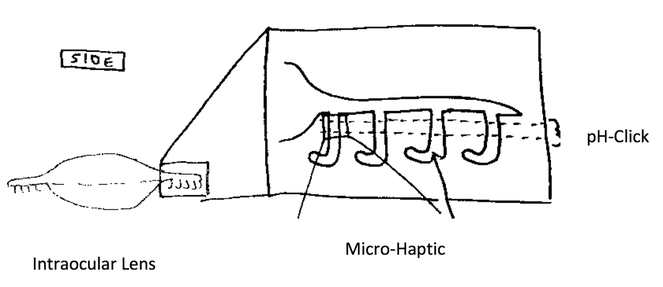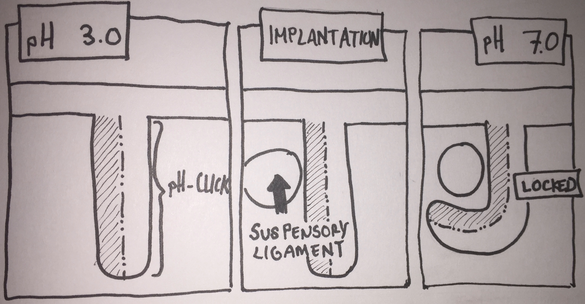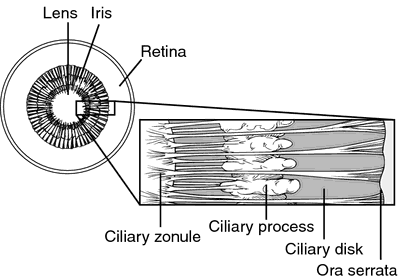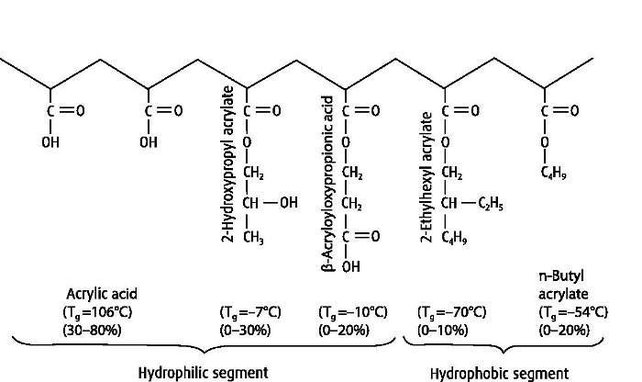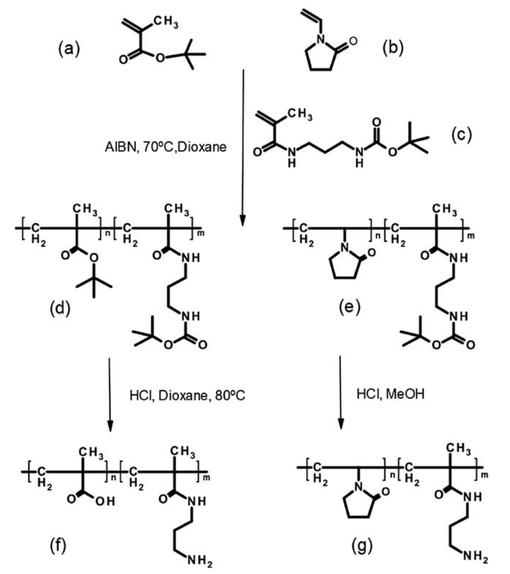Proposed Solution
To prevent the secondary surgery due to Lens loosening or lens rotation [1], micro-haptics hooks are created that change shape depending on pH concentration. First, the IOLs are packaged in a 3.0 pH solution causing the micro-haptics to be straight. Second when introduced into the 6.80-7.46 pH of the aqueous humor, the straight micro-haptics curve. The curving of the micro-haptics lock onto suspensory ligaments.
pH-Click Schematic
The Intraocular Lens is suspended in pH 3.0 packaging. Then implanted into the patient and correctly aligned. The 7.0 pH of the aqueous humor changes the pH-Click shape of the micro-haptic to lock the IOLs to the suspensory ligament.
Suspensory ligament also known as Ciliary zonule
http://medical-dictionary.thefreedictionary.com/ciliary+zonule

